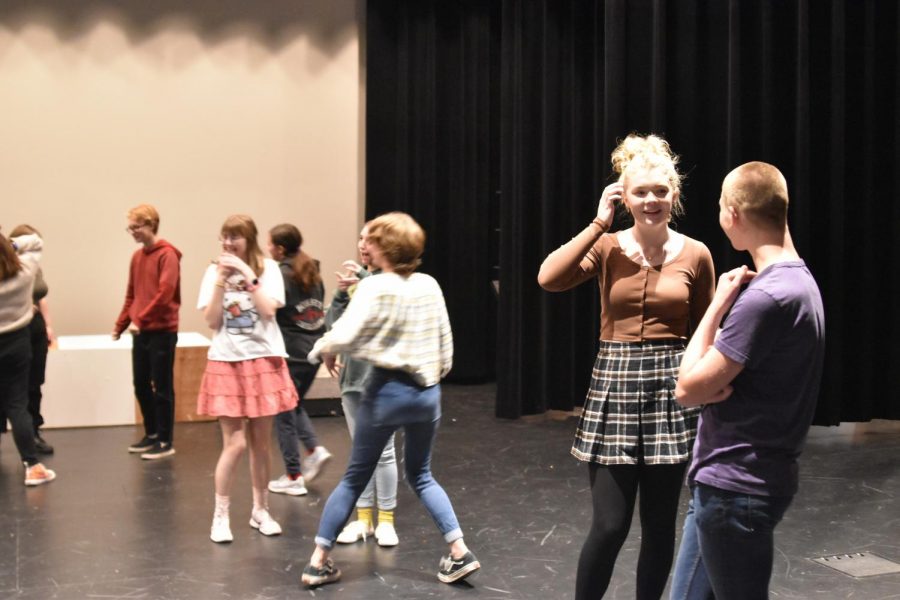Behind the scenes
When producing a musical, there are many different factors that must come together in time for a successful show.
Theater captains Kendall Lawless and Trisitin Qualey converse on stage before a long day of choreography.
The Cannon Falls Theater department invites everyone to grab their coats, stir up some hot cocoa, and cozy in for the perfect family production. This year’s musical, Frozen Junior, is full of exciting dance numbers, soulful melodies and dramatic plot twists. The cast can’t wait to dazzle the audience. But, putting together an amazing show doesn’t happen in one day. The making of a musical takes a lot of work—before rehearsals start, on the stage, and behind the scenes.
Before rehearsals can begin, there is quite a bit of planning to do. Tania Legvold, this year’s musical director, explained, “Once a show has been chosen, I need to notify the company that owns the rights to the show that I want to do their show and set up a contract with them.” After the contract is set, she starts researching the history behind the show, studying past productions, and reading the script – several times. The key to her musical productions is figuring out how to make a show unique while following a script and staying true to the original spirit of the production. Then, as the plan begins to develop, she also needs to find people to assist with the technical side of things. Finding dance choreographers, costume and prop designers, set builders, musical accompanists, and lighting technicians is no easy task. Fortunately, the parents and friends of cast members are often willing to help. Finally, after many hours of planning, Tania announces the much-anticipated auditions in which she will carefully select the cast for the show.
After the character list is set and rehearsals start, the cast gets to work. Each member familiarizes themselves with the show and starts to develop their character. Understanding the plot and meaning of each scene is very important to creating a successful show; especially when developing characters, learning music, and memorizing lines. The start of rehearsals also marks the start of the very fun, but very draining dance rehearsals, when each dance is carefully choreographed, and every cast member starts to eagerly anticipate opening night – when they can finally show off their new, dazzling performances in front of an audience. However, there is a myriad of tasks to be worked through first. Memorization week, a crucial step in any performance, brings new challenges. As the cast starts to put all of the songs, lines, and dances they’ve worked hard to learn into one coherent show, new elements like props and set pieces bring timing and organizational challenges. The real test, though, is tech week. The week leading up to opening night is full of long rehearsals spent scrambling to fit every piece together as smoothly as possible. This is when the behind-the-scenes work becomes front and center in importance.
Once the carefully practiced dance numbers and songs are pieced together, tech week’s commencement means that it’s time to add the elements that make theater come alive. Everything from costumes and props to lighting and sound needs to be organized. Parent and student volunteers source wigs, shoes, and outfits while tech volunteers learn to operate spotlights, stage lights, microphones, and music soundtracks. The show is tweaked over and over to make sure the timing of everything is just right. The cast and volunteers have to stay on their toes as tasks can change by the minute. Junior tech worker Lauren Ritz summed up the experience by saying that “There’s a lot of work involved with producing a show that needs a variety of different props, set pieces, costumes, music, lighting, and microphones for every scene, and it can definitely get confusing. But, especially as someone who doesn’t actually go on stage, I can see the production get better throughout the course of every single rehearsal, which makes the experience very rewarding.”

